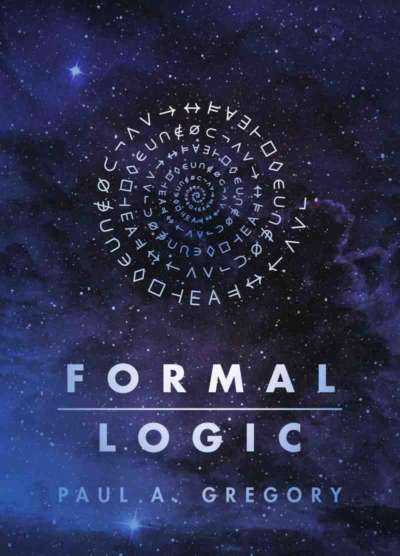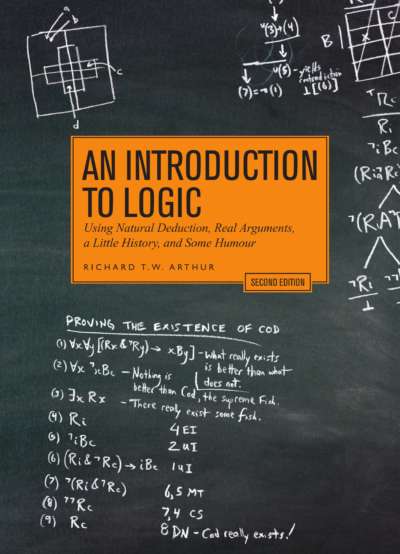This book reclaims logic as a branch of philosophy, offering a self-contained and complete introduction to the three traditional systems of classical logic (term, sentence, and predicate logic) and the philosophical issues that surround those systems. The exposition is lucid, clear, and engaging. Practical methods are favored over the traditional, and creative approaches over the merely mechanical. The author’s guiding principle is to introduce classical logic in an intellectually honest way, and not to shy away from difficulties and controversies where they arise. Relevant philosophical issues, such as the relation between the meaning and the referent of a proper name, logical versus metaphysical possibility, and the conceptual content of an expression, are discussed throughout. In this way, the book is not only an introduction to the three main systems of classical logic, but also an introduction to the philosophy of classical logic.
Comments
“Aladdin Yaqub’s text artfully balances precision and clarity with an uncommon sensitivity to the philosophical issues that motivate interest in, and study of, formal logic. This is a first-rate introduction to an important and sometimes difficult subject.” — Roy T. Cook, University of Minnesota, Twin Cities
“If one has philosophically sophisticated students who need to learn elementary symbolic logic but would benefit from a discussion of topics in more advanced logic and in the philosophy of logic, this is the right book to use. It would be fun to take a course with this as the text.” — Bernard Linsky, University of Alberta
“I enjoyed logic when I first encountered it as an undergraduate, but I didn’t understand it. I thought it was basically a game in which one moved around meaningless symbols in accordance with made up rules. That was fun, even rather challenging, but what was the point? What I needed was Professor Yaqub’s book. In clear, careful prose he explains the real philosophical significance of logic. And he makes clear how the three historically important logical systems set out in the book, term logic, sentential logic, and predicate logic, attempt to deal with the deep issues of reasoning and thought that logic addresses. At the same time he somehow manages to keep the fun part. In fact, the exercises he provides look far more engaging than the ones I remember from my undergraduate days.” — G.F. Schueler, University of Delaware
Introduction and Instructor’s Guide
Chapter One: Informal Logic
1.1 Taxonomy of Arguments
- Definition of an argument
- Types of link
- Deductively valid and invalid arguments
- Deductively sound and unsound arguments
- Deductive logic
- Deductive Arguments
- Probabilistic arguments
- Probabilistic logic
- Cogent arguments
1.2 Classical Deductive Logic and the Notion of Logical Possibility
- Definition of a logical possibility
- Classical truth values and bivalence
- Deductive validity and logical consequence
- Definition of deductive validity
- Definition of deductive invalidity
- Definition of logical truth
- Definition of logical falsehood
- Definition of contingency
- Definition of logical equivalence
- Definition of consistency
- Definition of inconsistency
- Relevant logical possibilities
- Examples and counterexamples
1.3 Exercises
Solutions to the Starred Exercises
Chapter Two: Term Logic (TL)
2.1 The TL Worldview
2.2 The Syntax of TL
- The basic vocabulary of TL
- TL sentences
- Non-recursive generative grammar
2.3 Translating English into TL
- General terms
- Singular terms
- Universal and existential quantifiers
- Translating English idioms into TL
2.4 The Semantics of TL
- TL diagrams
- Similar TL diagrams
- The truth conditions of TL sentences
- Truth values of TL sentences on similar TL diagrams
2.5 Logical Concepts in TL
- Definition of a TL argument
- Logical possibilities and TL diagrams
- Definition of deductive validity in TL
- Definition of deductive invalidity in TL
- Definition of logical truth in TL
- Definition of logical falsehood in TL
- Definition of contingency in TL
- Definition of logical equivalence in TL
- Definition of consistency in TL
- Definition of inconsistency in TL
- The decidability of logical concepts in TL
- The representability of logical possibilities by TL diagrams
2.6 Exercises
Solutions to the Starred Exercises
Chapter Three: Sentence Logic (SL)
3.1 The SL Worldview
3.2 The Syntax of SL
- The basic vocabulary of SL
- SL sentences
- Types of SL compound sentences
- SL construction trees
- A convention
- Generative recursive grammar
3.3 Translating English into SL
- Translating English connectives into SL connectives
- Translating English idioms into SL
3.4 The Semantics of SL
- SL truth valuations
- The truth conditions of SL sentences
- Truth tables
- Truth analysis
3.5 Logical Concepts in SL
- Definition of an SL argument
- Logical possibilities and SL truth valuations
- Definition of deductive validity in SL
- Definition of deductive invalidity in SL
- Definition of logical truth in SL
- Definition of logical falsehood in SL
- Definition of contingency in SL
- Definition of logical equivalence in SL
- Definition of consistency in SL
- Definition of inconsistency in SL
- The decidability of logical concepts in SL
- The representability of logical possibilities by SL truth valuations
3.6 Exercises
Solutions to the Starred Exercises
Chapter Four: Predicate Logic (PL)
4.1 The PL Worldview
4.2 The Syntax of PL
- The basic vocabulary of PL
- PL quantifiers and PL terms
- PL formulas
- Bound and free variables and PL sentences
- PL construction trees
- Three conventions
- Generative recursive grammar
4.3 Translating PL into English and English into PL
4.4 The Semantics of PL
- PL interpretations
- The size of a PL interpretation
- The truth conditions of PL sentences
- Bivalence and classical truth
4.5 Logical Concepts in PL
- Definition of a PL argument
- Logical possibilities and PL interpretations
- Definition of deductive validity in PL
- Definition in deductive invalidity in PL
- Definition of logical truth in PL
- Definition of logical falsehood in PL
- Definition of contingency in PL
- Definition of logical equivalence in PL
- Definition of consistency in PL
- Definition of inconsistency in PL
- The undecidability of logical concepts in PL
- The relation between TL and PL and the relation between SL and PL
- The representability of logical possibilities by PL interpretations
4.6 Exercises
Solutions to the Starred Exercises
Chapter Five: Classical Proof Theory
5.1 The Notion of Demonstrative Proof
5.2 The Notion of Formal Derivation
- Definition of a formal derivation
- The Soundness Theorem for PL
- The Completeness Theorem for PL
- Corollaries of the Soundness and Completeness Theorems
- The Compactness Theorem
5.3 The Natural Deduction System (NDS)
- Types of NDS rules
- The NDS rules of inference
- The Gentzen Deduction System (GDS)
5.4 Strategies for Constructing Formal Derivations
5.5 Exercises
Solutions to the Starred Exercises
Index
Aladdin M. Yaqub is Professor of Philosophy at Lehigh University and the author of An Introduction to Metalogic, The Liar Speaks the Truth, and a new translation of Al-Ghazali’s Moderation in Belief.
The instructor site includes solutions to the book’s exercises. An access code to the website is included with all examination copies.











